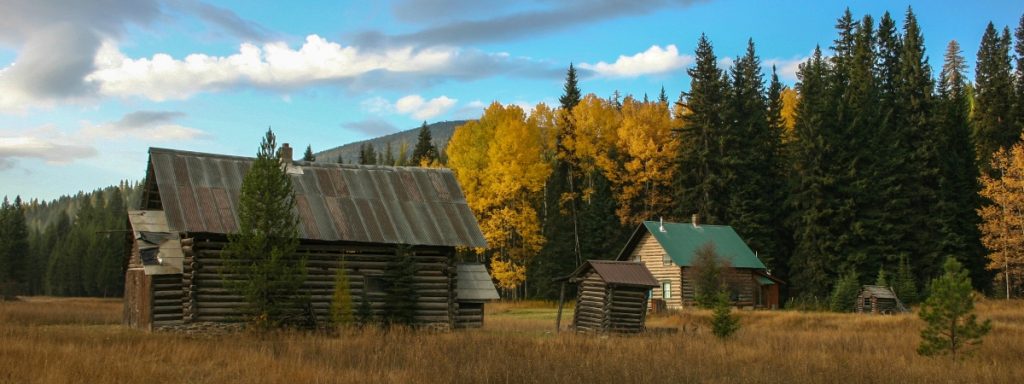Self sufficiency farming is something that many people aspire to, but few ever fully achieve.
It’s hard work, but more and more people are trying to make the leap.
In the past few years we’ve seen the impact that inflation can have on the prices of food and other items. We’ve also seen food and fuel shortages first-hand.
This has led to more people who now want to be self-reliant.
Becoming self-sufficient is easier now than ever. But it’s still quite a long and difficult process. Especially when compared to living in the city and working a conventional job.
In this article we’ll explain what self sufficiency farming is, the pros and cons of it and how much land you need. Plus we’re sharing dozens of step-by-step tips to help get you started.

What is Self Sufficiency Farming?
Self sufficiency farming is producing most or all of your food on your own land with little to no external inputs or help from other people or organizations.
A self-sufficient farmer does little or no trading with the world outside of their farm. They’ve got everything they need and could go years without ever leaving their land or going into town.
Being self-sufficient takes a lot of discipline and planning.
For example, a self-sufficient homestead will need to store enough food during the warmer months to get them through the entire winter.
Being self-sufficient and sustainable living go hand in hand. A self-sufficient farm tries to produce as little waste as possible.
Instead, waste products are repurposed or reused in other ways. And almost nothing is consumed on the farm other than what is produced there.
Other concepts like permaculture and renewable energy are also essentially mandatory to have a well-functioning self-sufficient farm.
Self sufficiency farming means learning how to grow, make and sell everything that you need.
How Many Acres Do You Need For a Self Sustaining Farm?
The amount of land you’ll need for a self sustaining farm will vary widely depending on who you ask.
The types of activities that you do on your farm and what your goals are will also dictate how many acres you need.
Can you be self-sufficient on 1 acre? The answer will really depend.
If you make use of every bit of space on one acre of land and are okay with some restrictions on what you can grow, you can make it work.
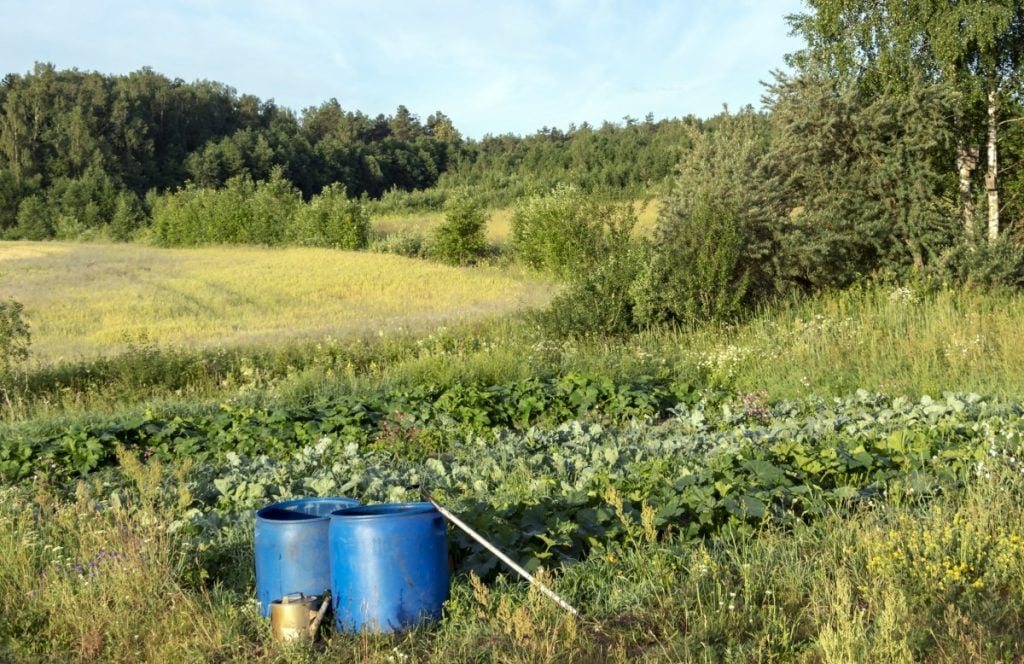
How Many Acres For Vegetables?
If you’re extremely efficient, even 1/4 acre may be enough to grow most of the food for a small family.
In a perfect world, you can grow enough vegetables to feed two to four people in that amount of space.
We say in a perfect world, because chances are that you won’t be able to use 100% of your land. Some of your farm may be shaded out by large trees and covered in forest.
Or your soil may be hilly, swampy, or filled with rocks in certain spots.
How Many Acres To Raise Animals?
If you’re raising livestock, you may need as much as 50 acres or more, especially for larger animals like cattle.
One adult cow needs about 4 acres of land per month. You can see how if you’ve got an entire herd, this will start to really add up.
When you think about how much land you’ll need to raise livestock, don’t just think about the land they’ll be housed on.
You’ll also need enough additional pasture to rotate them to while grass and weeds regrow once one area is cleared out.
Don’t forget that you’ll also need enough land to raise enough feed to get your animals through the colder months.
Is your farm only a few acres and you want to be self-sufficient?
You’re probably going to have to give up red meat and live off just chickens, with maybe a couple pigs or goats spread over the course of the entire year.
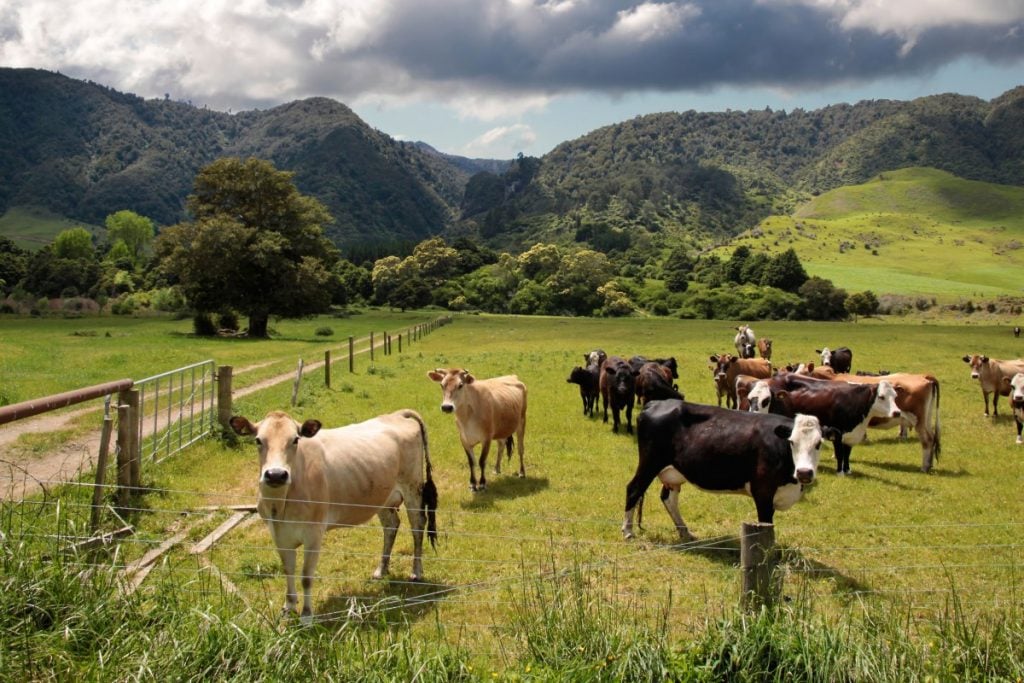
Other Land Uses
You’ll need to use the land on your self-sufficient farm for more than just vegetables and livestock.Energy is another major factor to consider.
If you’re using solar panels, you’ll need to set aside at least a few hundred square feet for them.
A smaller home needs about 200 square feet of solar panels (18 square meters) to be self-sufficient.
A larger home may need 1,000 square feet (approximately 90 square meters) or more.
If you’re heating your home with firewood and live in a cold climate, expect you’ll need five to 10 acres of forest to produce the wood that you need too.
Lastly, think about the space you’ll need for living and storing things. Your home is probably going to take up at least 1,000 square feet (90 meters).
You’ll also need a driveway to get on and off the property. Plus probably a couple of sheds or barns to store all of your tools and equipment.

How To Get Started With Self Sufficiency Farming (Step by Step)
If your dream is to have a self-sufficient farm one day, there’s no better time to get started than right now. Even if you currently live in the city, you can start on a few of these steps right away.
1. Get out of debt. If you’re living a self sufficient lifestyle, you’re not going to have the income coming in to pay off debt.
So before you can go completely off-grid, you’ll need to get rid of all of your credit card and student debt. You’ll also need to pay off any vehicles or other loans that you’ve got.
Ideally, you don’t even want to have a mortgage on your self-sufficient farm, as you’ll likely only be bringing in a few thousand dollars per year worth of income.
2. Cut out addictions. You’ll want to cut out alcohol and smoking for sure. Unless you want to distill your own alcohol and grow your own tobacco. But it’s better to focus on getting enough food to survive first.
It’s not just drugs and alcohol though. You’ll also want to cut out social media, television, your morning cup of pricey coffee from the local cafe and other vices.
These slowly drain your bank account or much-needed time for working on your homestead.
3. Get lots of exercise. On the homestead, you’ll be putting in a lot of hard, physical work. If you’re significantly overweight or out of shape, you’ll want to start exercising ahead of time.
So work on getting into shape now. Otherwise you’ll be exhausted and have a high chance of injuring yourself when your livelihood depends on having a healthy body.
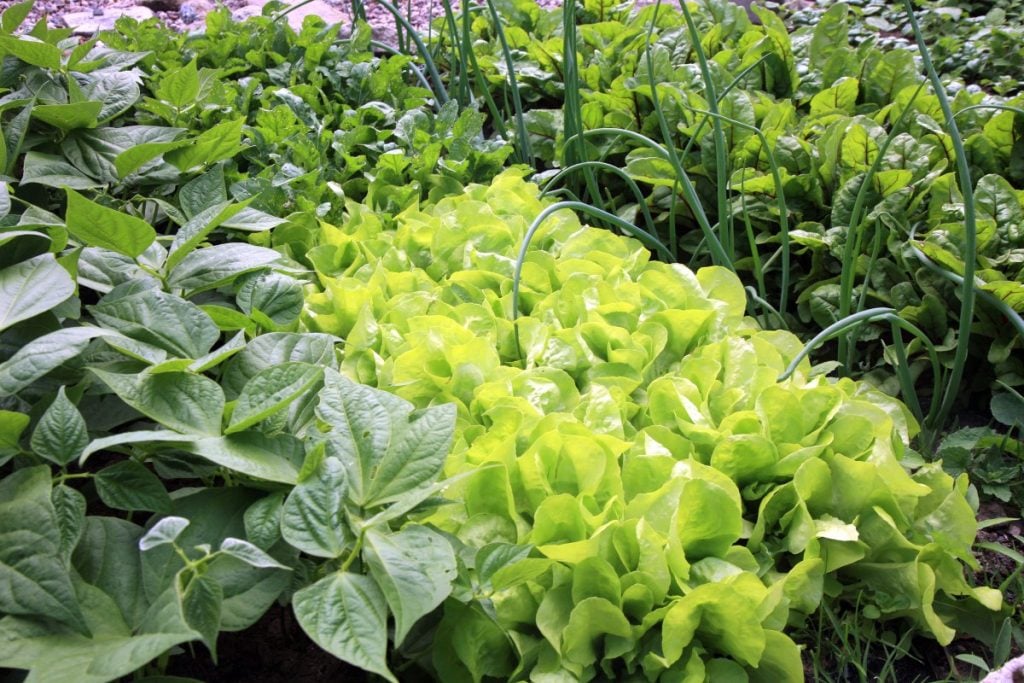
4. Start a garden. Anyone can start here, even if you live in an apartment. You can start growing vegetables in containers on your balcony or in a sunny window.
Growing your own fruits and vegetables will be crucial to getting the vitamins and minerals that you need on the homestead. So you’ll want to start learning and experimenting early.
5. Get rid of your lawn. Replace decorative plants with ones that produce food. Trade out shrubs for blueberry bushes and install fruit trees instead of ones that don’t contribute food.
6. Make sure you have the right skills. If you don’t come from a farming background, there’s a lot to learn.
7. Obtain suitable land and water to be self-sufficient. You’ll need to plan out how much land you need and then buy an appropriate property.
Make sure there’s a water source on the property. Either a well, or a river running through that can be dammed or diverted off of.
You don’t want to risk running out of water if there’s a drought or during warmer months of the year.
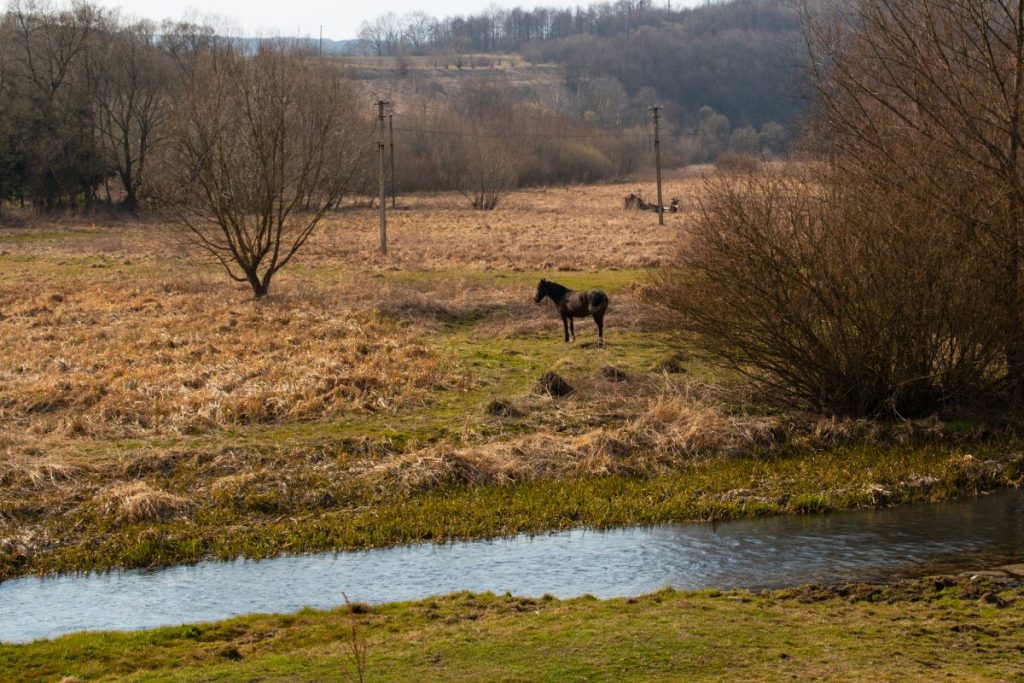
8. Buy less. Self sufficiency is about being less of a consumer and more of a producer. You won’t be able to bring many outside resources onto your homestead.
So start adopting a more minimalist lifestyle early on. Make sure your family is on board with this too, or they may be in for a shock later on.
9. Stock a pond on your property with fish. Once you’ve got a homestead, you can make use of natural resources like ponds as another food source. And to add more biodiversity to the land.
10. Raise livestock to get all of your own meat. Meat is expensive and you probably won’t want to be buying it every week if you’re living a self sufficient lifestyle.
Determine what type of meat your family eats the most. Whether it’s chicken, turkey, pork, beef, lamb, or something else. And then work out how many animals you’ll need to meet that demand.
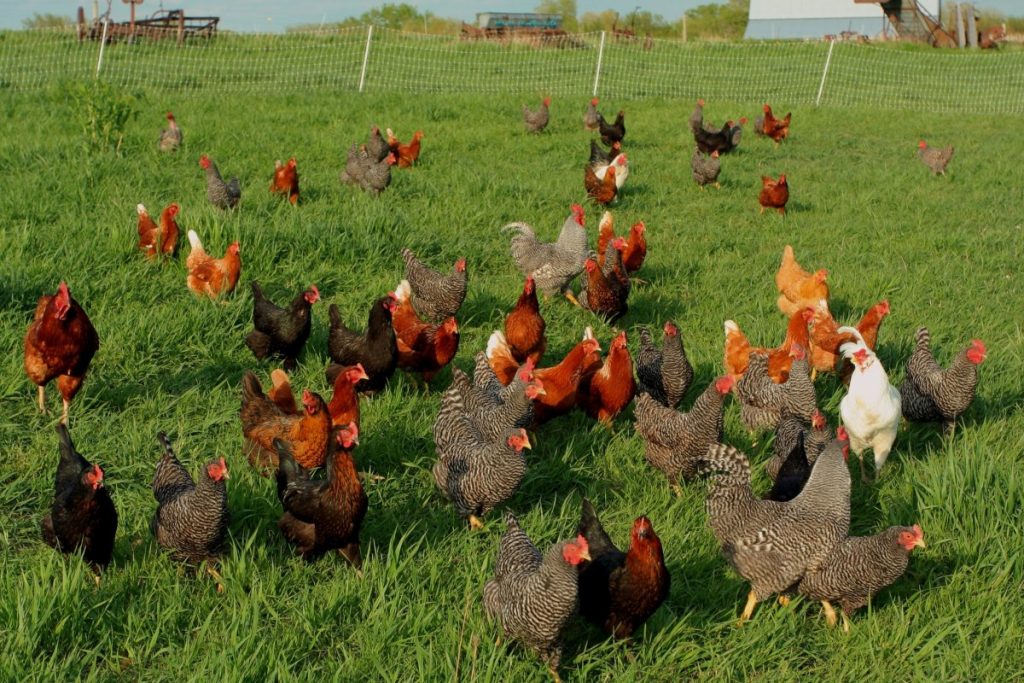
11. Breed your own livestock. You won’t want to be buying new animals every spring. So you’ll need to learn how to breed your own livestock.
That way you’ll have multiple generations of animals on the farm and can create a more sustainable system.
12. Grow your own animal feed. One of the biggest inputs into raising animals is feeding them.
You’ll need land for them to graze or you’ll need animal feed like hay and general grains–maybe even both.
13. Learn to hunt. Many farms will have deer and other wild game roaming around. It’s one additional resource on your land that you’ll want to learn to make use of.
14. Learn to trap. Trapping is like hunting, but it doesn’t require long hours of actively sitting and waiting.
Trapping is a good way to get meat for your family and also for dealing with pests that are damaging your crops or livestock that you want to get rid of.
15. Learn to butcher your own meat. After you’ve raised or hunted your own meat, you won’t be taking it to a slaughterhouse to process for you.
You’ll need to learn how to process and store all of your meat. You’ll want to keep as much as you can and minimize waste as much as possible.
16. Produce your own compost. Get rid of the idea of “waste” on your homestead and start to see everything as a resource.
There won’t be garbage collectors coming to pick up your trash each week like in the city.
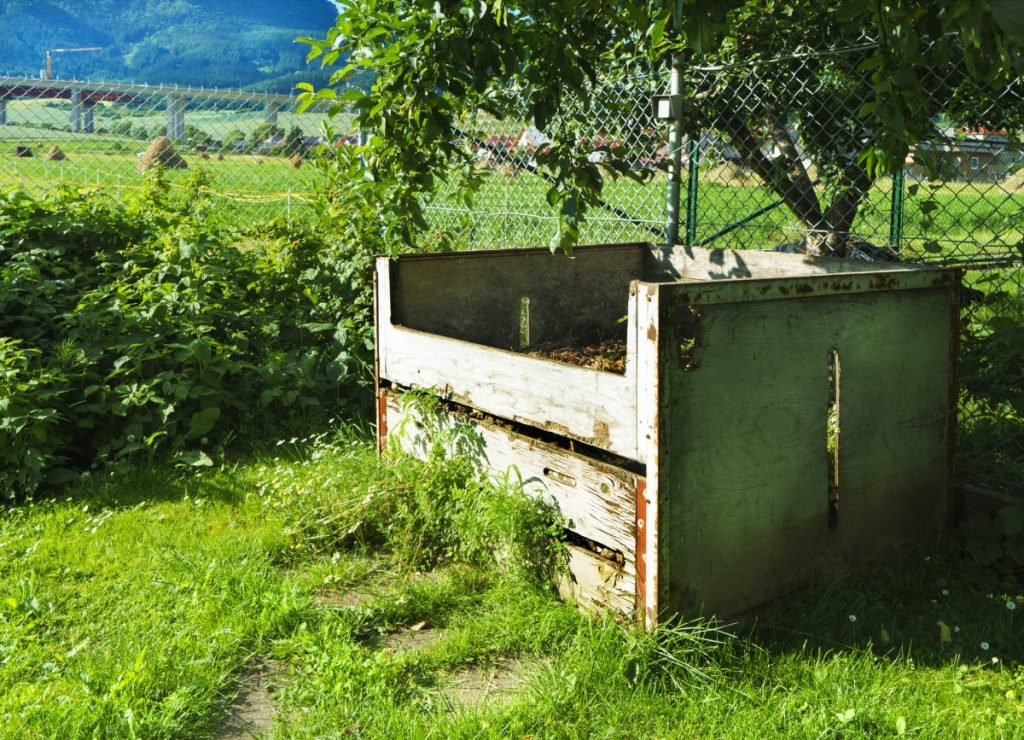
17. Join a community. The truth is that it’s very hard for even the strongest of us to be complete “lone wolves” and do everything on our own.
It’s important to build relationships with your neighbors. You never know when you might need to ask for assistance in a time of need.
Many of them are also of a similar mindset to you and have years of wisdom and advice that they can share.
You can also join local organizations to network with people and get a break from the isolation and loneliness that can come with living on a self-sufficient farm.
18. Learn to preserve food. Much of your vegetables, fruits and herbs will all ripen at once in the late summer and autumn.
You’ll need to store enough food for your family to make it through the winter. Learning how to can, pickle and smoke foods is critical to prevent them from spoiling.
19. Harvest your own firewood. You’ll need to own and manage at least a few acres of woodland if you’re planning to heat your home with a wood stove.
Expect to spend at least a few full days per year chopping and stacking firewood.
20. Set up sustainable energy. To be fully self-sufficient, you’re going to have to go off-grid.
That doesn’t necessarily mean you need to give up the comfort and convenience of electricity. But you’ll need to set up solar panels, windmills, or other sources to gather and store it yourself.
21. Get all of your water off the grid. At a bare minimum, you’ll want a well or two dug on your property for groundwater. Ideally you’ll have a river, stream, pond, or other source of water as well.
22. Harvest rainwater. Building on the last point, rainwater harvesting can add to your water supply. You can use it to water crops and for other purposes.
But depending on where you live, you probably won’t be able to survive off of just rainwater all year round and will need another source.
23. Install a composting toilet. Having a septic system on your property will require maintenance and draining every three to five years.
Instead, look into creating composting toilets or other more sustainable and self-sufficient alternatives.
24. Use permaculture. To be truly sustainable, it’s better to work with nature instead of against it. See our article How to Create a Permaculture Homestead in 8 Steps for more details.
25. Grow mushrooms. Mushrooms are a great source of protein, amino acids and other nutrients that are hard to find in plants.
They make a good supplement or even a replacement for meat in your diet.
Not many other homesteaders or farmers in your area are likely growing them. So they’re a valuable commodity to barter with as well.
26. Learn woodworking skills. On the farm, you’ll need to fix lots of wooden things like barn doors or fences when they break. As well as making most of the furniture for your home.
27. Milk cows and goats. If you enjoy drinking milk or eating cheese, then you’ll need animals that produce it.
Whether you just want some milk as an occasional treat, or plan on starting a microdairy to earn additional income, will determine how many cows or goats you need.
28. Keep bees. Bees produce honey that you can eat. But they also produce beeswax that’s useful for making candles, soaps and other products.
29. Save seeds and grow heirloom varieties. You don’t want to be reliant on seed companies every year to grow your own food.
You will have to let a few of each plant go to seed at the end of the season and then save the seeds for next year.
Make sure to select organic heirloom varieties of seeds when you’re first getting started.
Seeds from F1 plants or any other hybrids can’t be saved for future years, or won’t grow true to seed if they do.
30. Cut your own hair. There are lots of little things like haircuts that you take for granted while living in the city.
When the nearest barber or hairdresser is an hour or more away, you’ll want to learn to cut your own hair as well as the hair of all of your family members.
31. What can you grow to be self-sufficient? The top of your list should be some type of staple crop.
This is normally a carb-heavy, calorie dense crop. Like wheat, corn, rice, or potatoes.
The other thing that all of these crops have in common is that they can be stored for a long time as well.
Salad greens and other vegetables provide lots of vitamins and nutrients. But they don’t provide the raw amount of calories that you need to eat when working on a farm.
So you’ll need these energy-rich staple crops to be part of most of your meals.
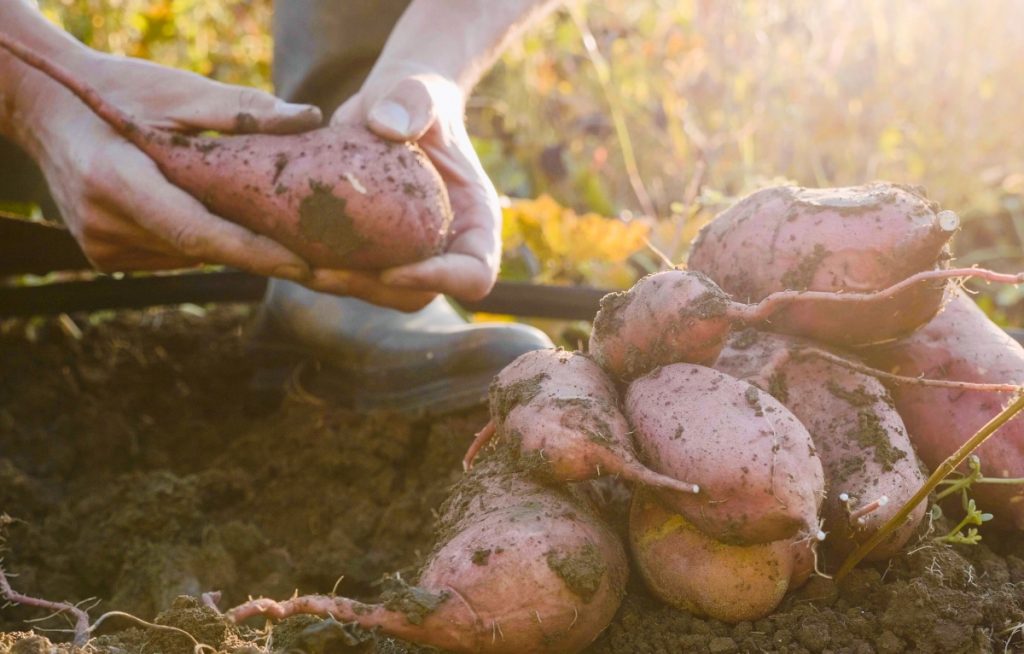
32. Learn to fix things yourself. Most farmers learn to be handymen or jack-of-all-trades out of necessity.
You can’t always bring in a plumber or electrician. And it would be costly to do so for every little problem that you have. So a lot of it will be trial and error on your part.
33. Make your own soap. The ingredients to make soap and the process itself is fairly straightforward.
You’ll need a way to get clean. And making your own soaps is one less thing you’ll need to buy.
34. Grow your own herbs. Eating plain wheat and potatoes every meal will get dull. You’ll want some herbs to add some flavor.
If you enjoy spice, you may want to grow a few hot pepper plants too.
35. Cook from scratch. There’s no food delivery when you’re a self-sufficient farmer. So nearly all of your meals on the homestead will be cooked at home.
36. Mend and sew your own clothes. Chances are that you won’t have a loom on the farm to create your own thread. So you will need to barter or buy fabric from time to time.
However, learning to mend, hem and sew your own clothes can help extend the lifespan of your clothing for years. There’s no reason to throw out a pair of jeans just because of a small hole.
Most days you’ll be working in the dirt and won’t see anyone besides your family. So it’s okay if your working clothes look a bit ragged.
37. Forage for food. If you’ve got acres of land, there’s a good chance that it’s full of lots of common edible wild plants that you can harvest.
You can also use permaculture to add extra edible plants to your landscape.
38. Air dry your clothes. Sunshine is an abundant resource on the farm.
From spring to autumn, you can hang your clothes outside on a clothesline to dry. You’ll just need to plan your laundry days around the weather.
In winter, clothes can be air dried indoors next to the fire. There’s no need for an electric dryer on the homestead.
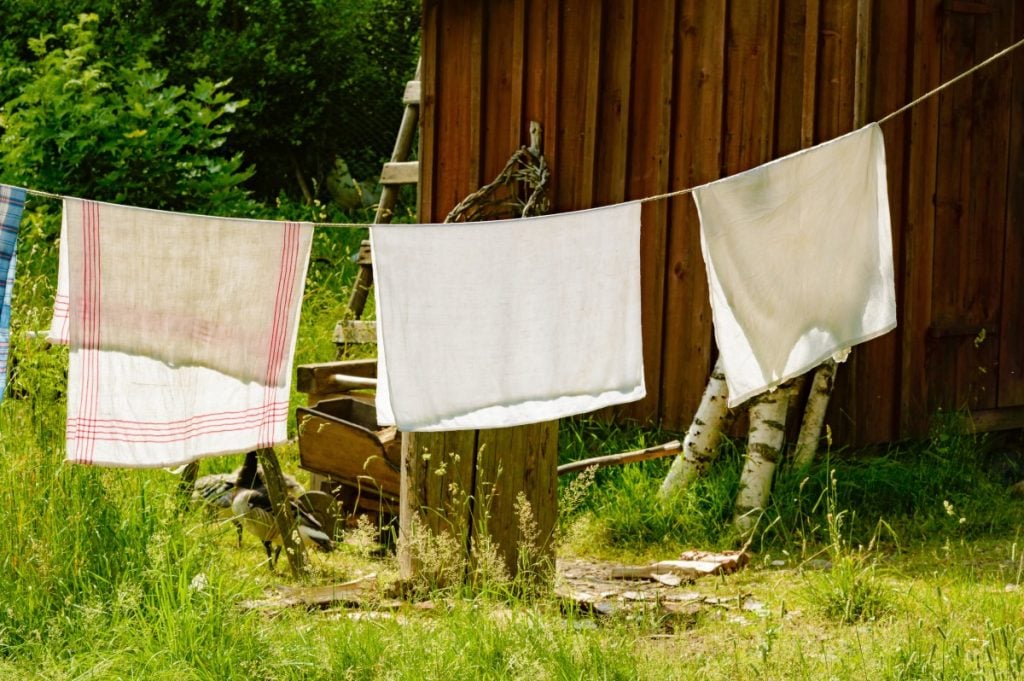
39. Think of how you can create an income. If nothing else, you’ll probably still need money to pay for your annual property taxes.
In some places, you can get a reduction in your tax rate of up to 75% for agricultural land if you meet certain criteria.
But chances are, you’ll still end up needing at least a few thousand dollars of income per year to pay for essentials.
40. Learn how to tan leather. If you’re keeping livestock, you won’t want to throw away their valuable hides. You can use them to make gloves, boots, furniture and more.
41. Make your own candles. Candles can be made from beeswax, soy wax and other natural forms of wax that you can produce on your farm. They’re reat for personal use, or to sell for generating income.
42. Tap maple or birch trees for syrup. Chances are you won’t be raising sugar cane on your farm in most climates.
If you’ve got a sweet tooth, you’ll need to tap trees or raise sugar beets. It will be your only way of getting refined sugar on your own land.
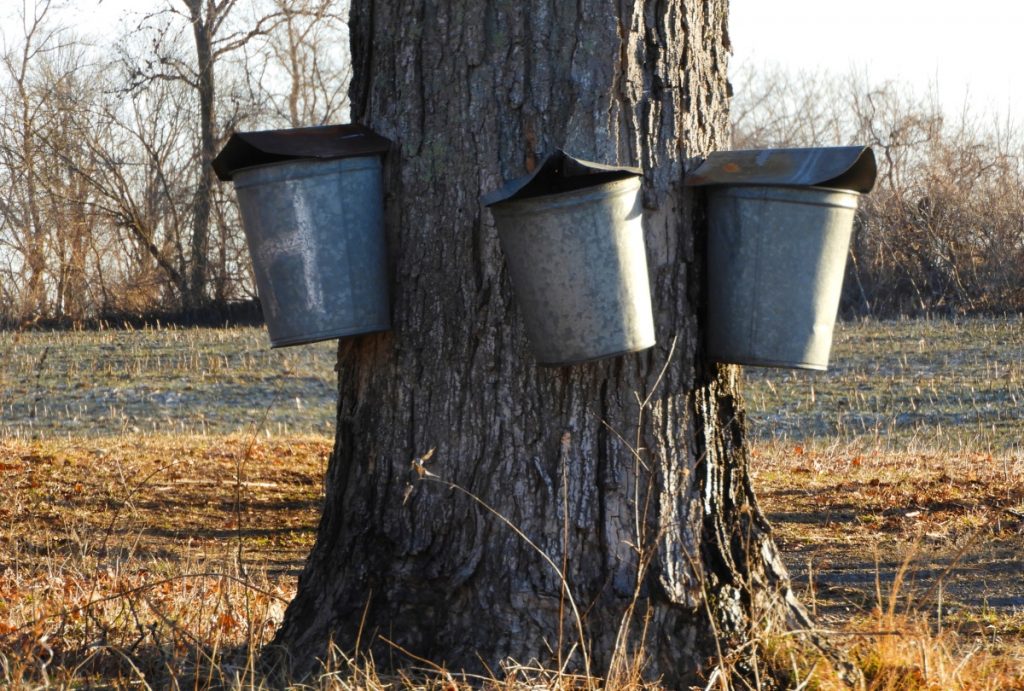
43. Teach and do farm tours. Not all homesteaders want strangers wandering around their farm.
But if you’re open to letting the public come for tours and lessons, it can easily make you a few hundred dollars per weekend.
44. Grow and use medicinal herbs. Like everything else, your nearest drug store is miles away. So you’ll want to look into natural herbal remedies.
There are plants that can be used for everything from headaches to lowering blood pressure.
45. Build a root cellar. Having somewhere cool, dry and dark will help when it comes to storing food. Things like potatoes, squash and dried beans will all store best in this kind of environment.
A root cellar is dug into the ground so that it doesn’t get too hot in the summer and doesn’t freeze in the winter either.
46. Learn how to barter and negotiate. Whether you’re trading your vegetables or spending hard-earned money, you’ll want to make it go as far as possible.
You’ll want to improve your negotiation skills to barter for cheaper prices on things that you need and to convince people to pay more for the things that you want to sell.
47. Always be reading and learning more. Being a farmer or homesteader isn’t something that you can learn once and then you know it.
You’ll be constantly experimenting and improving your processes over time. Be sure to keep growing and learning and avoid getting stuck in old habits.
48. Take a step back in time. Modern machinery with complicated electronics makes it nearly impossible to be self-reliant. You can’t repair a circuit board or broken LED screen on the farm.
To be truly self-sufficient, you’ll want to go back to washing clothes by hand, heating your home with fire and using a horse or ox to plow your field.
Some technology like solar panels and batteries will be mandatory if you want to stay living in the 21st Century.
But try to always opt for the most simple version of machines with the least moving parts whenever possible. That way you’ll be more likely to repair them yourself if they break.
49. Don’t be afraid to ask for help. It’s hard to do everything alone. But it doesn’t necessarily cost money to get help either.
You might be able to trade skills with a neighbor to get some specialty work done.
See our article A Step-by-Step Guide to Starting a Small Farm for even more details!

Pros and Cons of Self Sufficiency Farming
Pros
1. You’re ready for almost anything. Self sufficient farmers can grow their own food, repair things and make it through most situations. Short of a tornado or similar disaster, you can bounce back.
You aren’t impacted by things like power outages, civil disorder, or food or gas shortages like people living in the city.
2. You develop a wide skillset. Being self-sufficient requires you to develop a wide range of skills. You’ll be able to do more by yourself without any help needed.
3. You can live on very little income. A self-sufficient homestead produces the vast majority of its own food, energy and other resources. So you won’t need to earn tons of money each year to pay rent or buy groceries (but you won’t need it).
4. More fulfilling life. If you love farming and nature, then we can’t think of a better lifestyle. Being self sufficient gives you a feeling of accomplishment, satisfaction and empowerment that you can’t get from a job in an office.
You know that your family is fed and your home is heated because of the work that you’ve done.
The self sufficient lifestyle also provides a more healthy life. You get plenty of exercise and fresh air. Plus there isn’t the chronic stress of living and working in a city.
Cons
1. It’s not for everyone. Are you somebody who wants to live in a climate-controlled building with all of the comforts of modern life? Then a self sufficient homestead probably isn’t for you.
You’ll need to be out working in nature, rain or shine. Plus there are plenty of flies and mosquitos to contend with. You’re committing to a more limited type of lifestyle when you move to the country.
You won’t be able to go to the mall or movie theatre every weekend.
2. Requires a big upfront investment. Do you want to buy your multi-acre homestead and not have big mortgage payments every month? Then you’re going to need to save up hundreds of thousands of dollars.
3. It’s hard work. Operating your own self-sufficient homestead is physically very tough on your body. You’ll wear out your body over decades of heavy manual labor.
You’ll also need some plan for how you’ll live once you’re too elderly to do all of that hard work.
4. Loneliness. Unless you’re a very introverted person, you’ll probably get lonely from time to time if you’re living completely off grid. There are few reasons or opportunities to leave your farm.
So expect to go weeks or months without seeing someone outside your family. Unless you intentionally plan to visit neighbors or communities that you’re a part of.
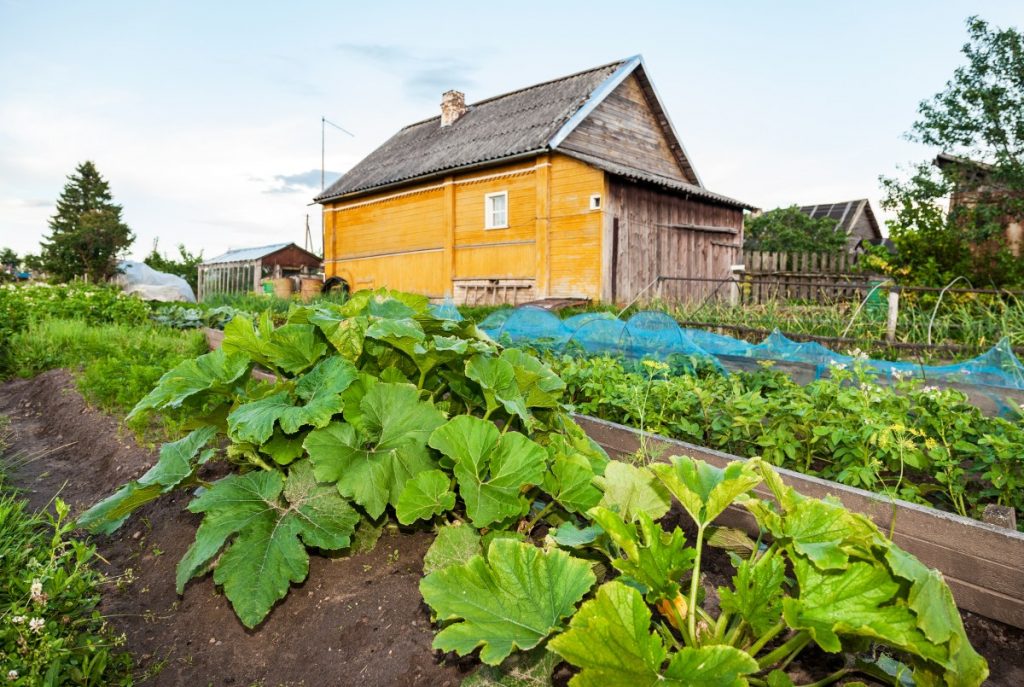
Common Issues With Self Sufficiency Farming (and How to Address Them)
1. Crop failure – Learn through experience, trial and error. Ask other seasoned farmers in your area for advice.
2. Taking on too much too quickly – Gradually build up your self sufficiency skills. You don’t have to do everything all at once.
3. Things breaking down – Develop repair skills necessary to fix and maintain most things that you own.
4. Earning money – Diversify your farm into other products that you can sell. See our article How to Make Money Homesteading: 48 Ways for details.
5. Heating in the winter – Make sure you stock up on enough firewood to last all winter. Have your house properly insulated and block any drafts.
6. Pest problems – Insects, mice, squirrels, raccoons, deer, wild pigs and more can all pose problems. Block entry points, eliminate food sources and set traps.
7. Disease and sickness – Have all members of your family trained in First Aid and CPR. Keep medical supplies on your homestead and know how to use them. Have a way of calling for help in an emergency.
Ready to Start Self Sufficiency Farming?
Self sufficiency farming can be a very rewarding lifestyle. But it’s also very hard work and it’s not for everyone.
You’ll need to learn to do most things for yourself and give up a lot of the comforts and conveniences that you’re used to if you live in a big city.
But if it’s something that you’re passionate about, now you have a guide of what you need to get started! To learn more about self-sufficient learning, check out our other resources on homesteading.
